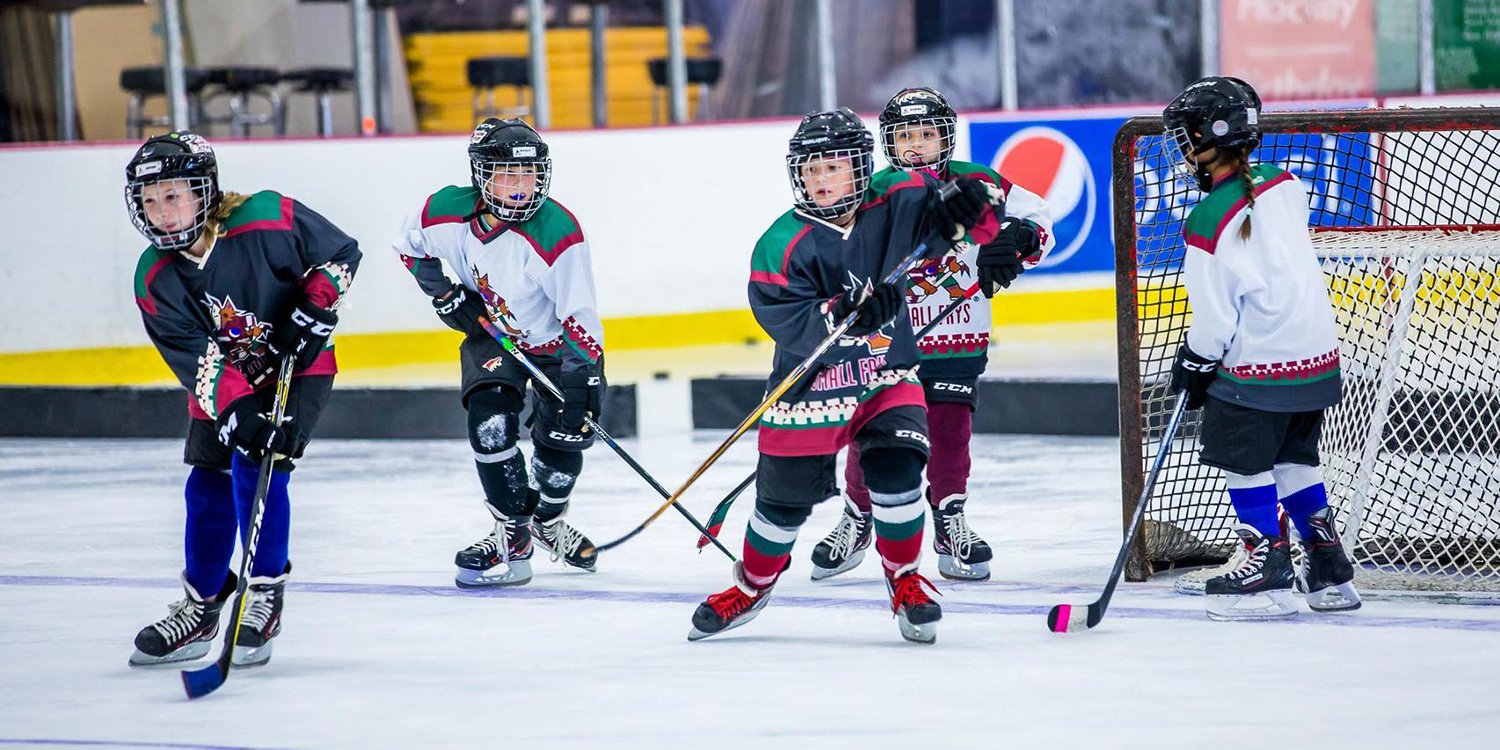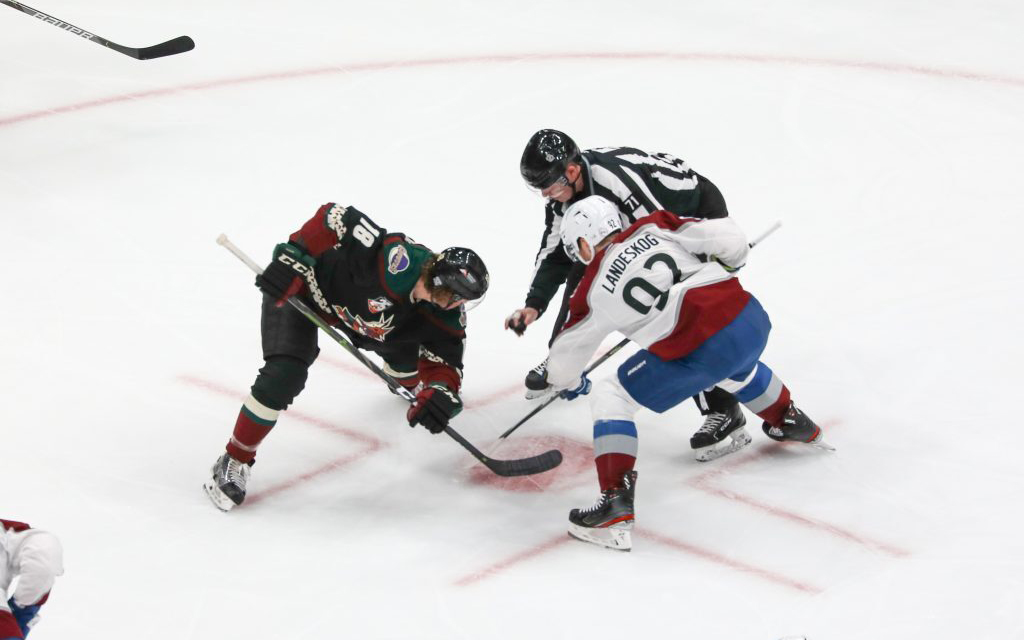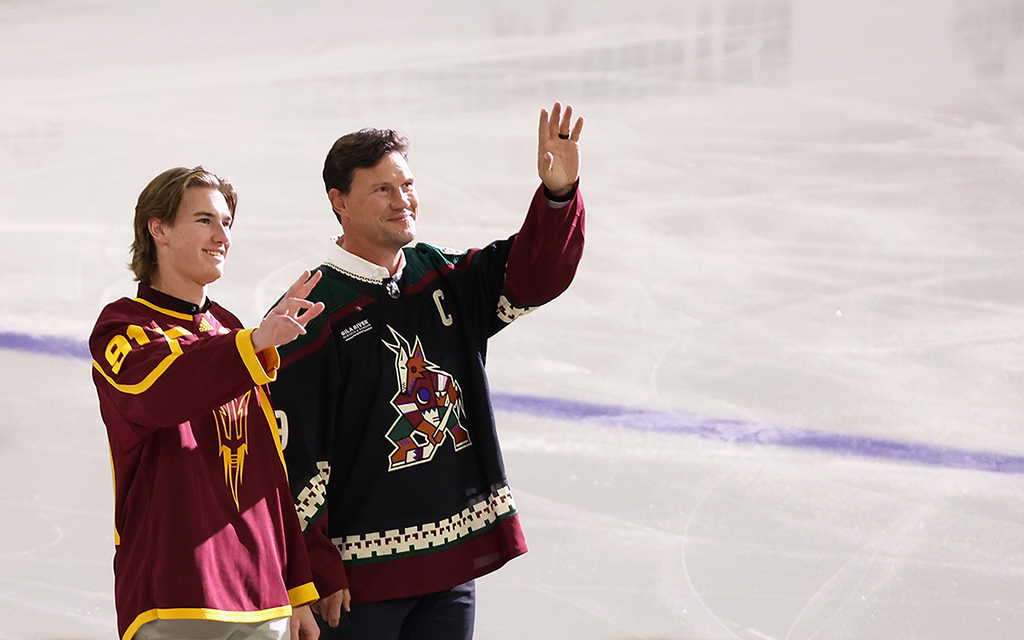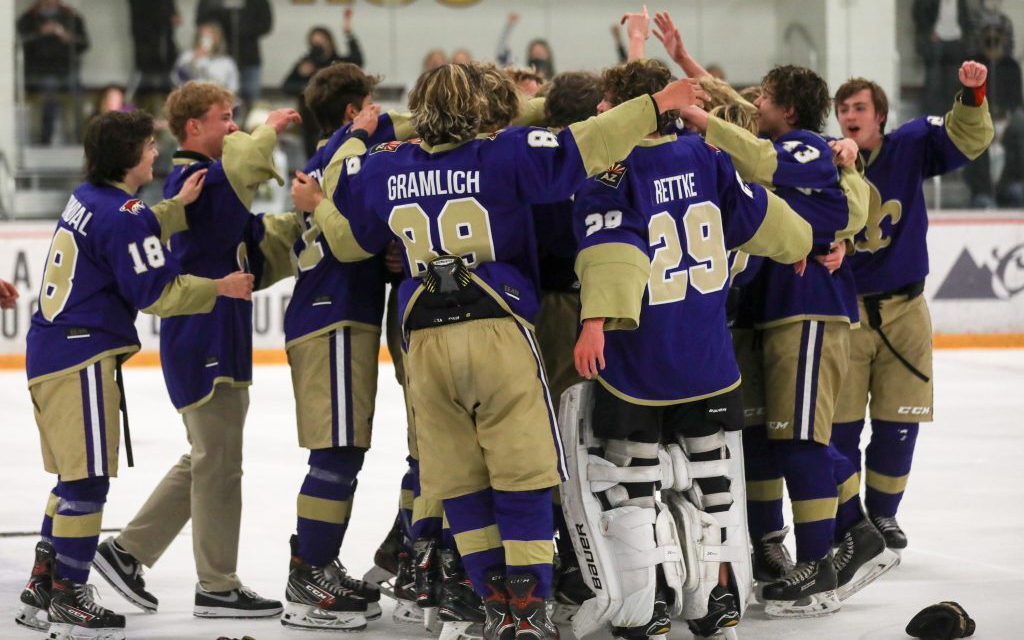Rise of college hockey in Arizona
While the NHL may be the ultimate prize to a young hockey player, a strong collegiate hockey program is also critical in growing the sport in any state. Universities in Minnesota, Denver and Boston live and breathe college hockey, producing some top-end talent across the NHL.
In the past, Arizona State University was traditionally known for its strong football and basketball programs while the school’s hockey program was sometimes considered as an afterthought.
In the early 1980s, ASU’s ice hockey club began, and it didn’t take long to become official. ASU joined the Division II American Collegiate Hockey League and by 1996 qualified to play in the ACHA Division I tournament.
Over the years through the process, ASU started to develop as a legitimate hockey program.
“I just don’t think a lot of students at ASU knew there was a club hockey program,” DeAngeles said. “There were a lot of kids from back east and stuff, you know, who were going to ASU but didn’t really know about it or weren’t interested in it. But little by little, we actually did quite well nationally for a couple years into doing it, you know, just grew and grew and just at the talent level got better and better.”
In 2014, ASU won the ACHA Division I national championship for the first time to bring much-needed attention to the up-and-coming hockey program.
“In 2013-14 we won a national championship, which raised a lot of eyebrows and it proved to a lot of people that college hockey can work here at Arizona State,” Powers said. “It elevated the awareness of our program to a level that I don’t know anyone could have dreamed of.”
On Nov. 18, 2014, ASU Vice President for University Athletics Ray Anderson announced that the school would move its hockey program to Division I. Two years later, ASU played its first full season in Division I but didn’t blossom into a true contender until the 2018-19 season with a 21-13-1 record to earn the program’s first NCAA tournament appearance.
Led by Powers, the ASU hockey program is starting to gain recognition nationally. On this year’s Sun Devils roster, there are 26 out-of-state players.
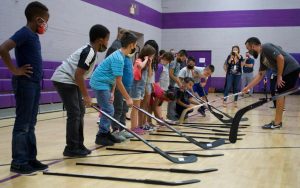
The Coyotes are determined to continue the growth of youth hockey, often putting on clinics for the community. (File photo by Jake Santos/Cronkite News)
High-caliber players born and raised in Arizona are also deciding to stay home to play college hockey at ASU, including NHL prospects Josh Doan, a second-round pick by the Coyotes in the 2021 NHL draft, and Demetrious Koumontzis, a fourth-round pick by the Calgary Flames in the 2018 draft.
“I think any chance you have to stay home and play Division I in front of your friends and family, it’s an opportunity you have to take,” Josh said. “Building hockey in the desert is something that my family has been keen on throughout my whole life and just making sure Arizona stays in a place where hockey can thrive.
“What better way to do that than to stay home in a program that is slowly starting to build and obviously what they have been able to do now, there is no school in the country better than them. They are competing with everybody and to be a part of that is huge.”
The Sun Devils have sent off an astonishing 23 players to play professional hockey, including the NHL’s Joey Daccord and Brinson Pasichnuk. Six ASU graduates from the 2021-22 team currently play professionally.
All these ASU hockey legends played at Oceanside arena, a place the Sun Devils called home for many years. Following the conclusion of the 2021-22 season, ASU closed their long rich history at Oceanside and officially moved into the newly built Mullett Arena.
With the ASU hockey program achieving success nobody could have expected, the bar needed to be raised. Mullett Arena is a 5,000-seat state-of-the-art arena that puts the program in another stratosphere.
“I think it just validates our program and solidifies where we’re at and how attractive we are, not only for players that want to come play here but for kids and families to come and watch games in such a great environment and see such high-level hockey here locally,” Powers said.
During the 2021-22 season at Oceanside, the Sun Devils averaged 721 fans per game due to limited seats in the arena. At Mullett Arena this season, the Sun Devils have averaged roughly 4,300 fans per game, a huge increase from previous years.
Fans can not only watch the Sun Devils play at Mullett Arena, but the Coyotes signed a contract to play at the unofficial mecca of hockey for the next three seasons with an optional fourth year if both parties agree.
“I think we’re an attainable light for kids to reach and want to be a part of one day,” Powers said. “The NHL certainly is a dream, but it’s a pipe dream for 99% of the kids that put on skates, but in Division I hockey you can do it. So when kids come here that play locally and they watch us play in front of 5,000 people in a beautiful arena against teams like Minnesota, we want them to grow up longing and dreaming to be Sun Devils.”
ASU might be the largest college hockey program in Arizona, but Grand Canyon University started a club in 2016, and the University of Arizona boasts a team that has made the ACHA National Tournament five times in the last eight years. The Wildcats, who won the Western Collegiate Hockey championship in 2019 and 2020, plan to build a new 3,000-seat arena for the men’s and women’s hockey programs by 2024.
“It’s been such an amazing transformation,” DeAngeles said. “Hockey in the Southwest United States is something I have always dreamt of happening and now it’s here.”
And hockey doesn’t appear to be going anywhere anytime soon. The state can compete with other top hockey towns across the country, whether at the professional, college or youth level.
“Stay home and stay in Arizona to develop,” Josh said. “If you’re good enough, scouts are going to find you at some point down the road no matter where you play. You don’t have to go to Minnesota or Michigan at a young age to hope that five years down the road you’re going to get scouted.
It goes to show the growth of Arizona hockey and what some of these younger kids are doing now and staying here. It’s something I hope other kids down the road are going to do, stay local and continue to produce prospects out of here for years to come.”
